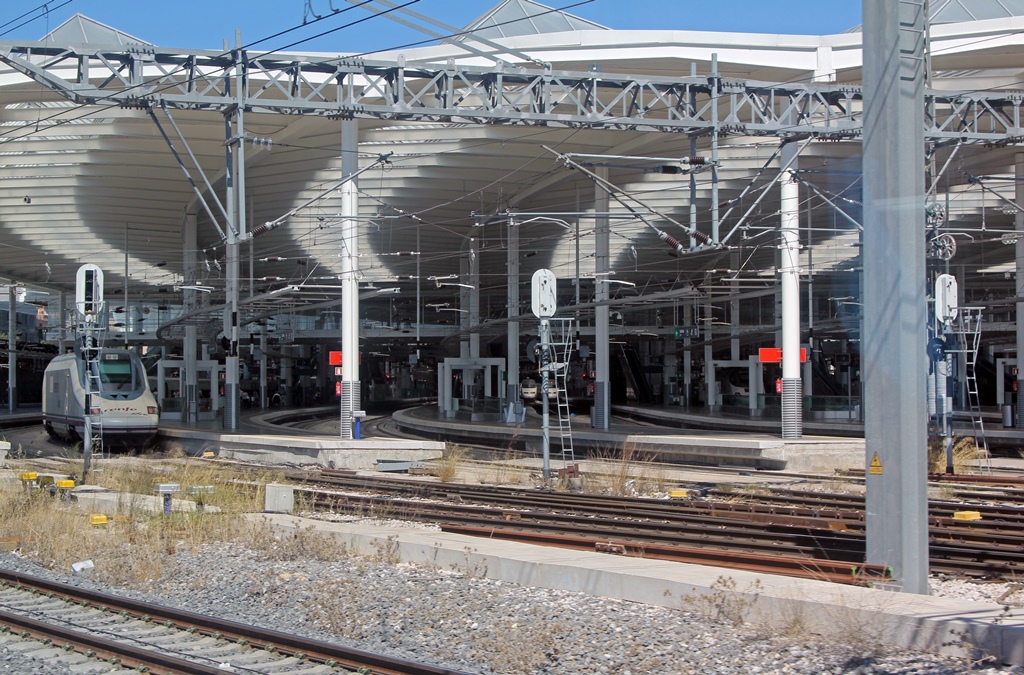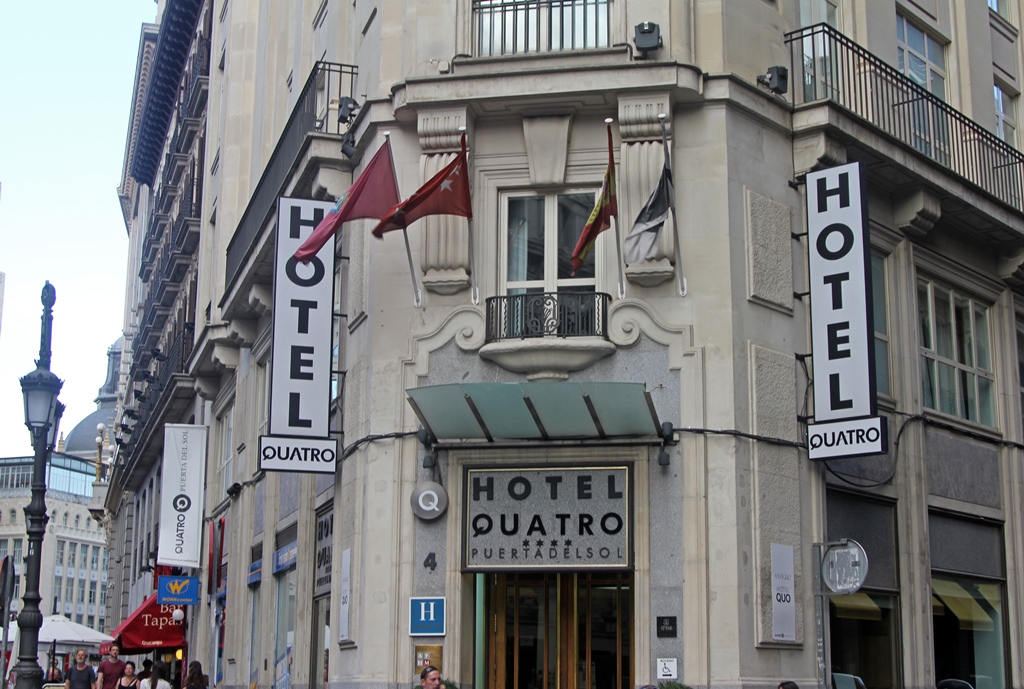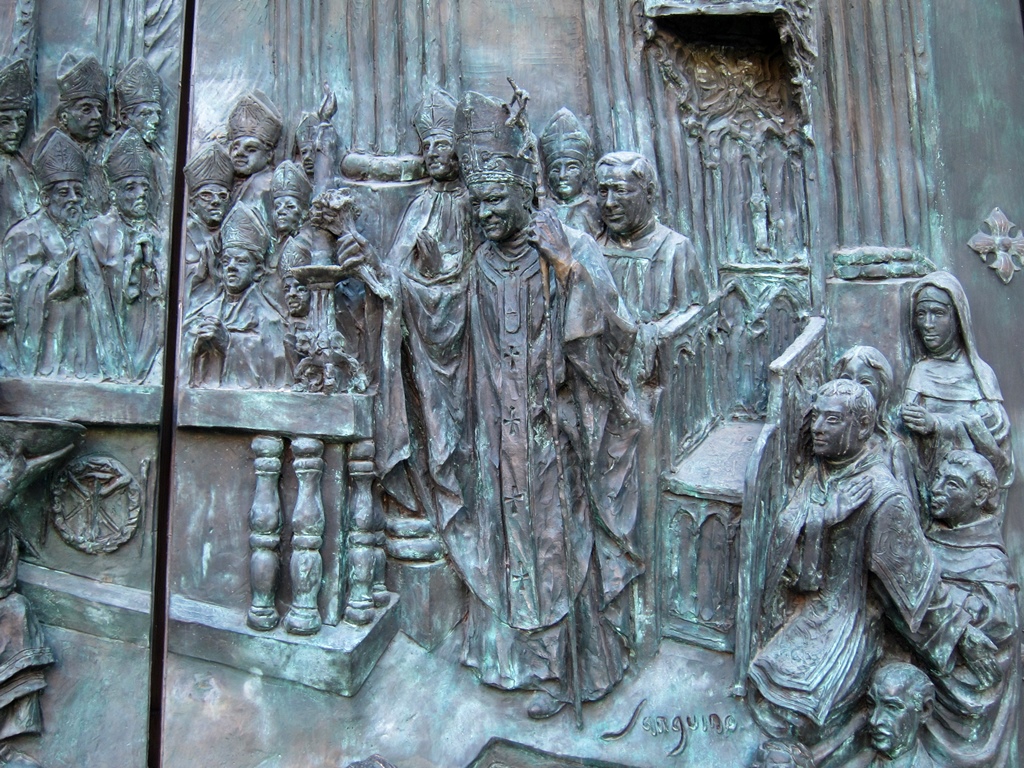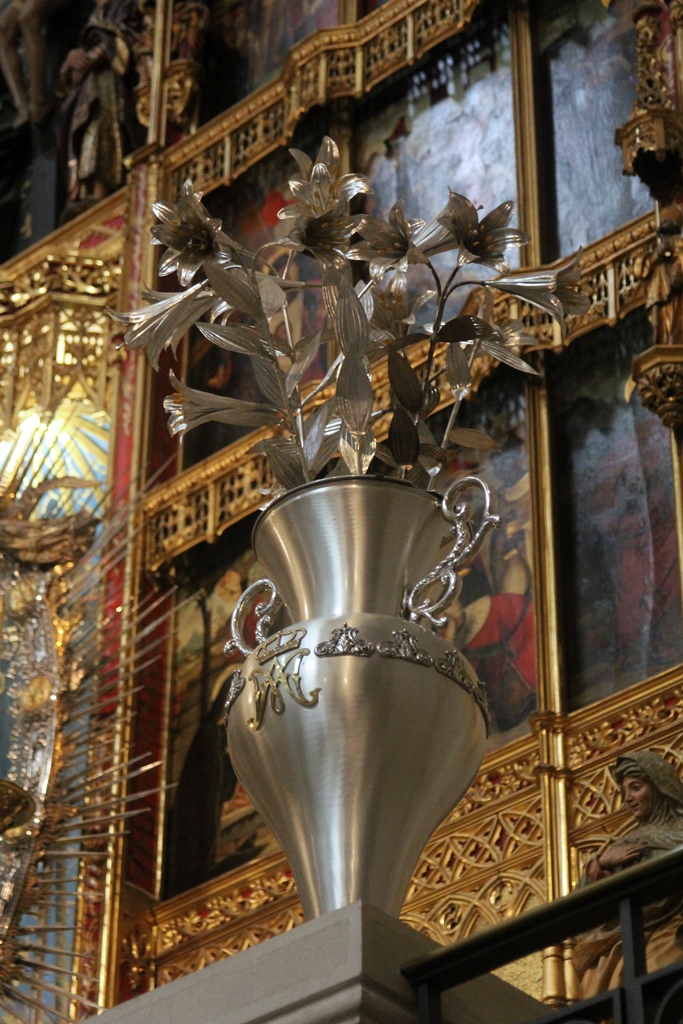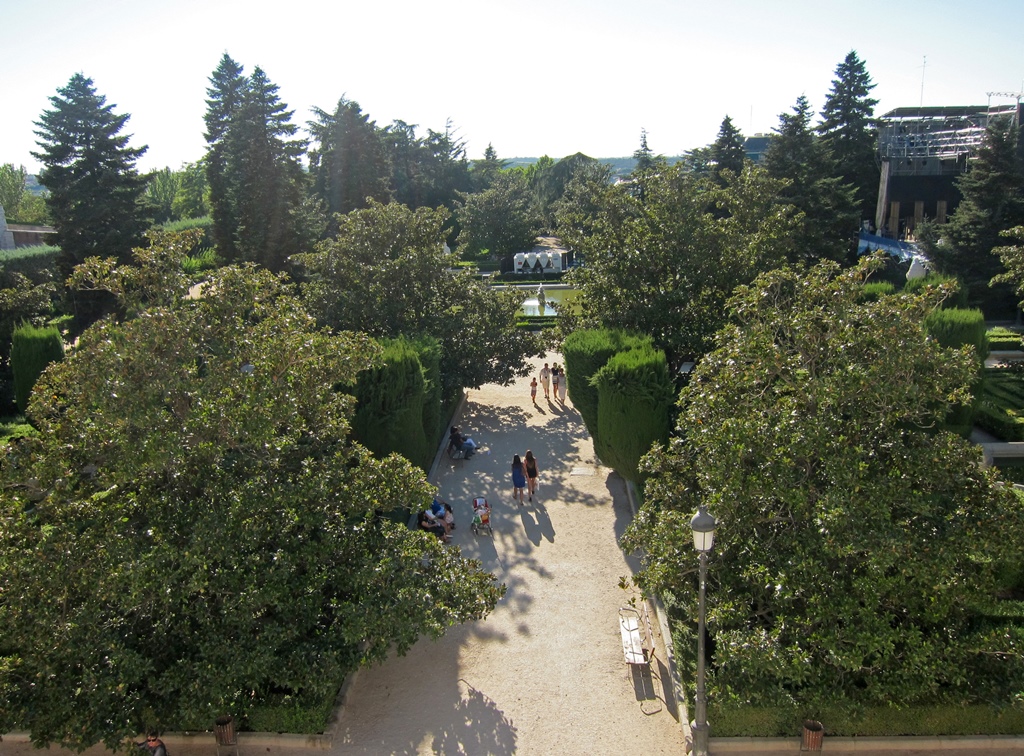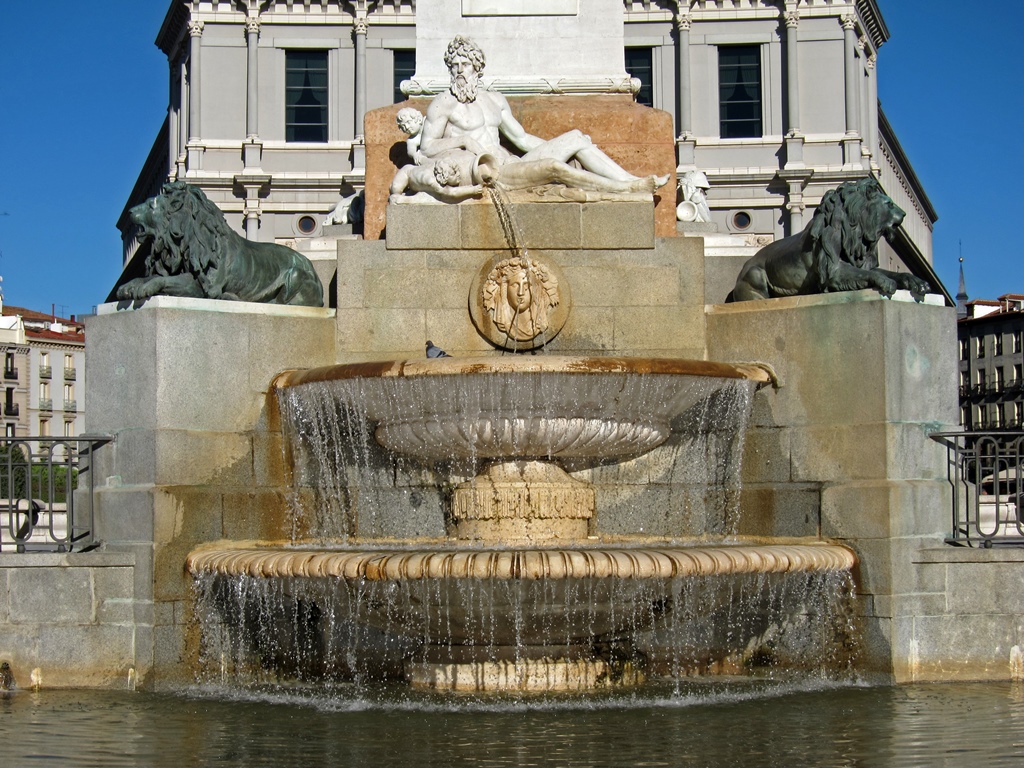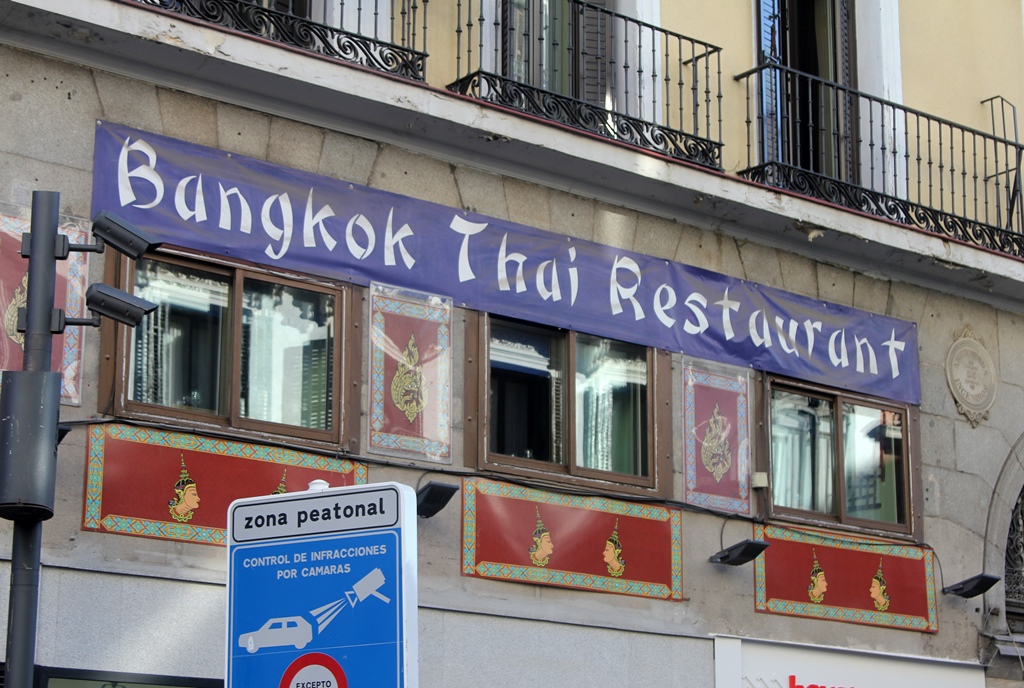We took a taxi from our Toledo hotel to the train station, for the same reasons we
had taken one in the opposite direction a couple of days earlier (distance, heat,
terrain, luggage). This time we paused awhile longer in the station itself, as the
train to Madrid wasn't available yet. It's a very nice-looking station, having been
built in 1919-20 in a Mudéjar style which had reached its peak several centuries
earlier. A 2005 restoration (coincidental with the inauguration of the new high-speed
service to Madrid) made everything look shiny and new.
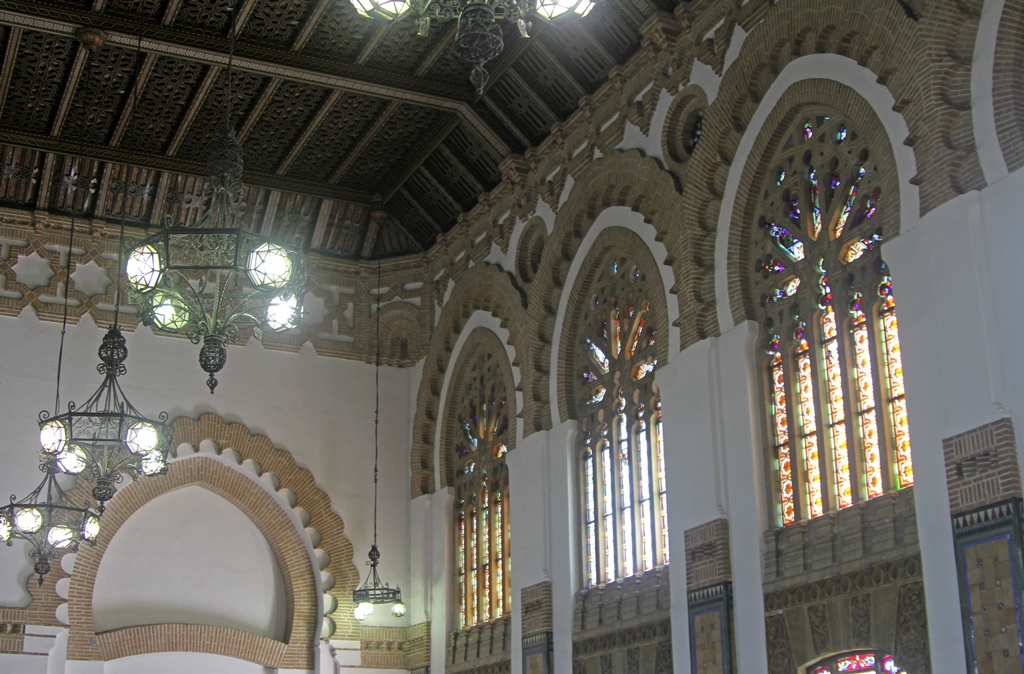
Toledo Train Station
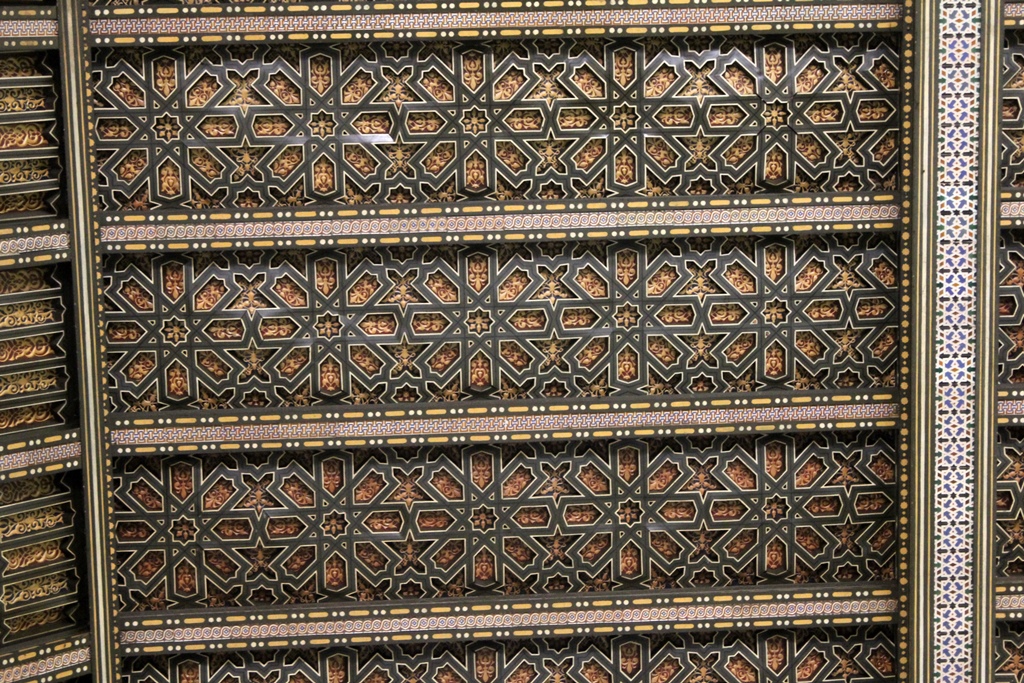
Mudéjar Ceiling
We struck our customary pose of mild boredom amongst battered luggage. Philip found
Wi-Fi, and was fiddling with his smartphone, while Nella, who was feeling unwell, was
content to watch the world go by. Eventually we had to stir ourselves into action,
as our train arrived and became available for boarding.
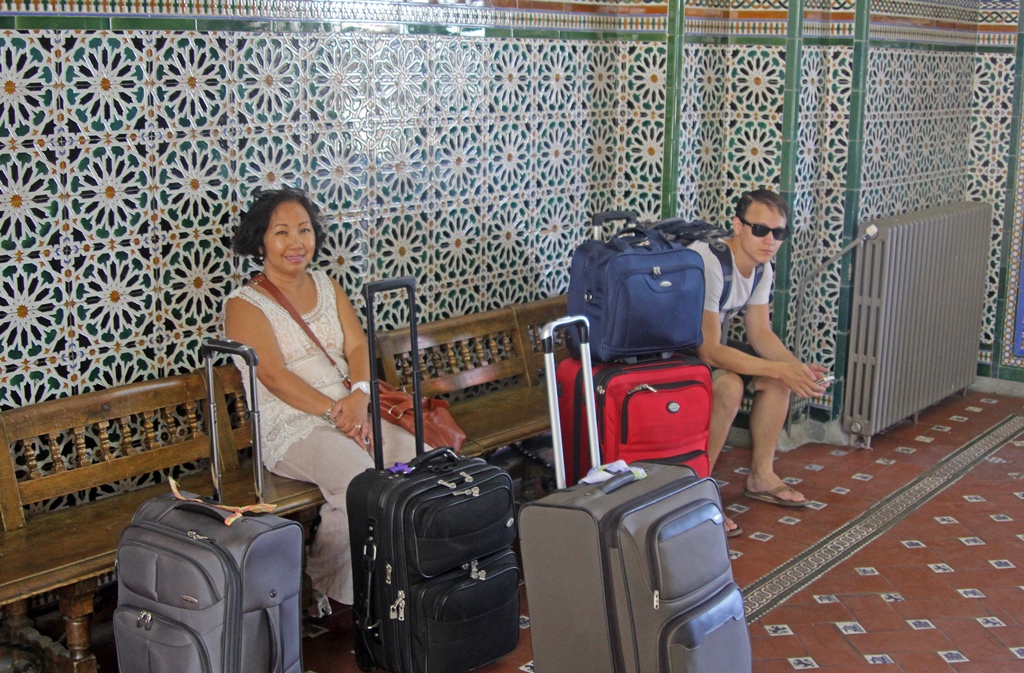
Nella and Philip and Luggage
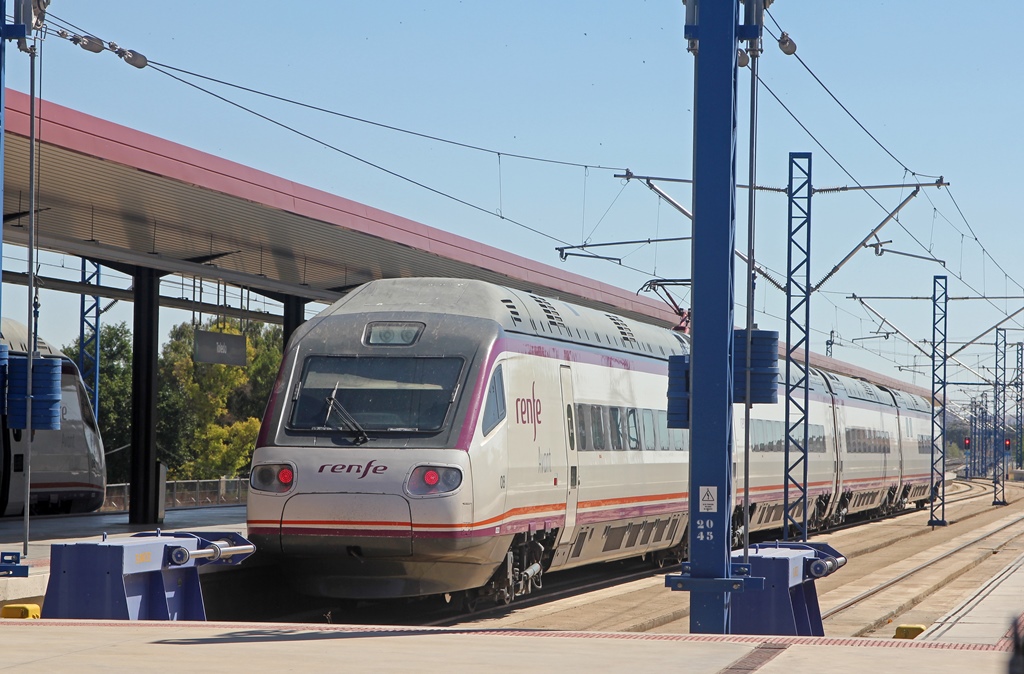
Madrid Train
The high-speed train trip was brief, taking about 35 minutes. We arrived at Madrid's
Atocha station, completing our ten-day grand circuit through central Spain.
Approaching Atocha Station
We caught the Metro at the Atocha station and took it to the stop in front of the
Hotel Regina, where we'd stayed on our arrival in Spain. This time, however, we weren't
staying in this hotel, but in the Hotel Quatro Puerta del Sol, a short distance down the
Calle de Sevilla.
Hotel Quatro, Puerta del Sol
After the short walk and the check-in procedure, Nella announced that she would be
out of commission for a while, and that Philip and I should go entertain ourselves.
She also asked that we see if we could find certain medications.
This is as good a place as any to insert a Travel Tip: Whenever travelling
to Europe (or to any other country outside the U.S.), do not assume that you
will be able to procure medicines you might need. It is best to bring along a small
supply of any medicine you can imagine possibly needing. This should be obvious for
prescription medicines, but also applies to medicines that can be easily bought over
the counter in the U.S. Other countries do not have CVS stores, Walmarts or Targets.
They do have pharmacies (in Europe, these stores usually have a sign with a green
cross), but in some countries (like Spain, for instance), over-the-counter medicines
are not displayed on racks for customers to just pick up and take to the cashier.
You have to talk to someone who may not know English very well, or who may be
unfamiliar with American brand names, and you might end up with a medicine you don't
recognize that has an effect which isn't quite what you expect. For this reason it
is advisable to bring along small supplies of things like pain relievers (Ibuprofen,
acetaminophen, aspirin), cold remedies (Sudafed, Mucinex, Robitussin), digestive
remedies (Pepto-Bismol, Imodium, Zantac), allergy remedies (Claritin, Benadryl) or
motion-sickness preventers (Dramamine, Bonine). Ideally bring them in pill form to
save on space and weight, and to avoid potential leakage issues (this might not be
possible with some medicines).
I decided to look into the medication thing before considering entertainment. I
found a green-cross store and talked to the person in charge of dispensing
medications, whose English wasn’t the best (but better than my Spanish). After some
discussion I purchased something which I took back to the hotel and gave to Nella.
It turned out not to work very well.
By this time it was late in the afternoon, but we determined that the Almudena
Cathedral was still open (and would be until 9 PM). Philip had not yet seen the
cathedral, so he and I headed west.
I've already presented
a page
on the Almudena Cathedral, which we'd visited on our 2010 trip, and I don't have
much to add. To review, the Almudena Cathedral is quite new as cathedrals go, not
having been consecrated until 1993 (by Pope John Paul II). Construction had begun
in 1879 (the Toledo Archdiocese had blocked the idea until this time, wanting to
maintain spiritual supremacy), but was delayed by funding shortages and the Spanish
Civil War.
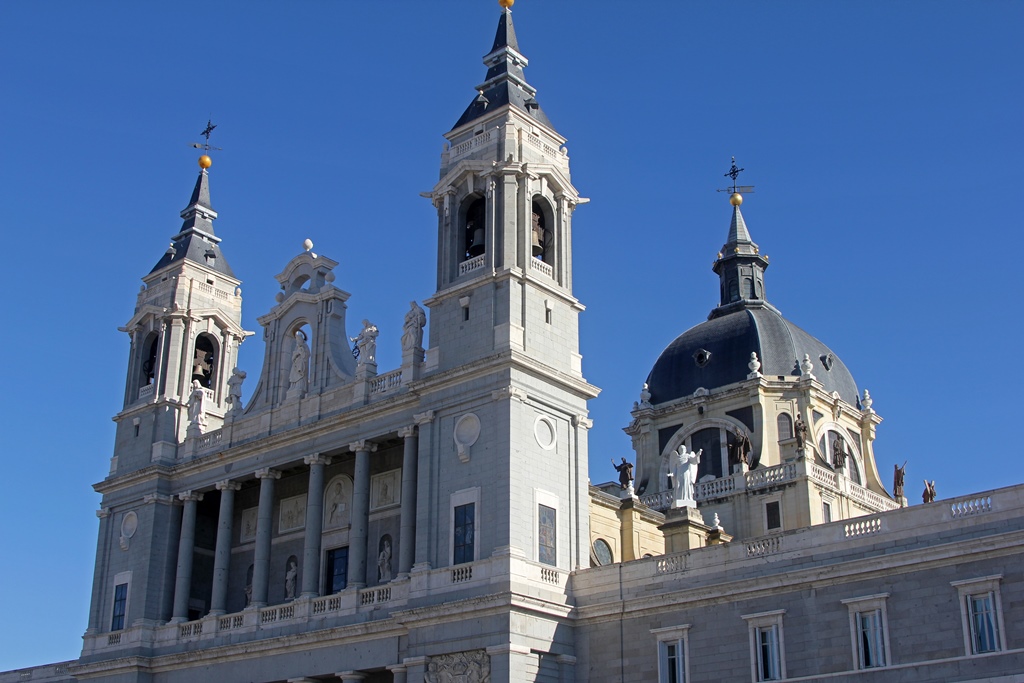
Almudena Cathedral
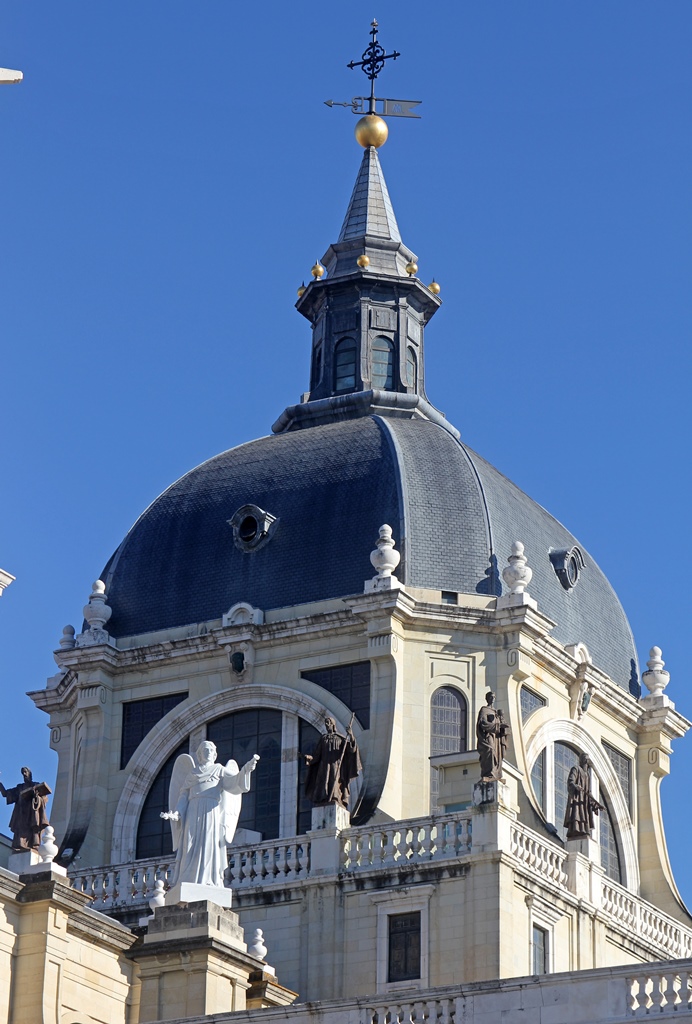
Cathedral Dome
The cathedral sports a number of bronze doors created by the Spanish artist Luis
Antonio Sanguino de Pascual in 2000 and 2001. Here are a few of them:
Consecration Door, detail
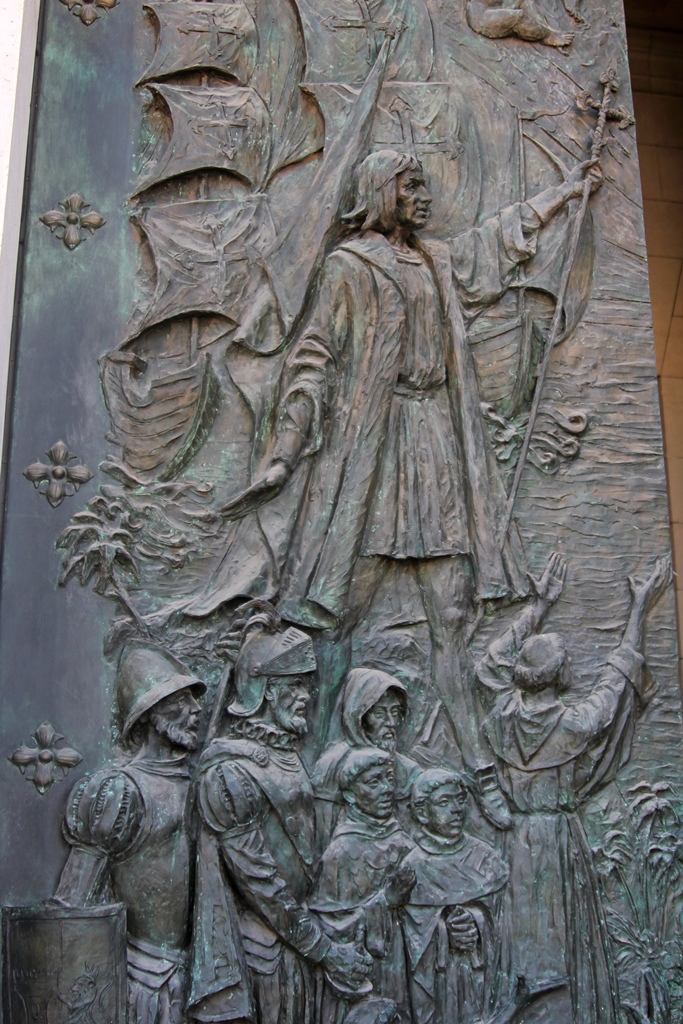
Columbus/Explorer Door
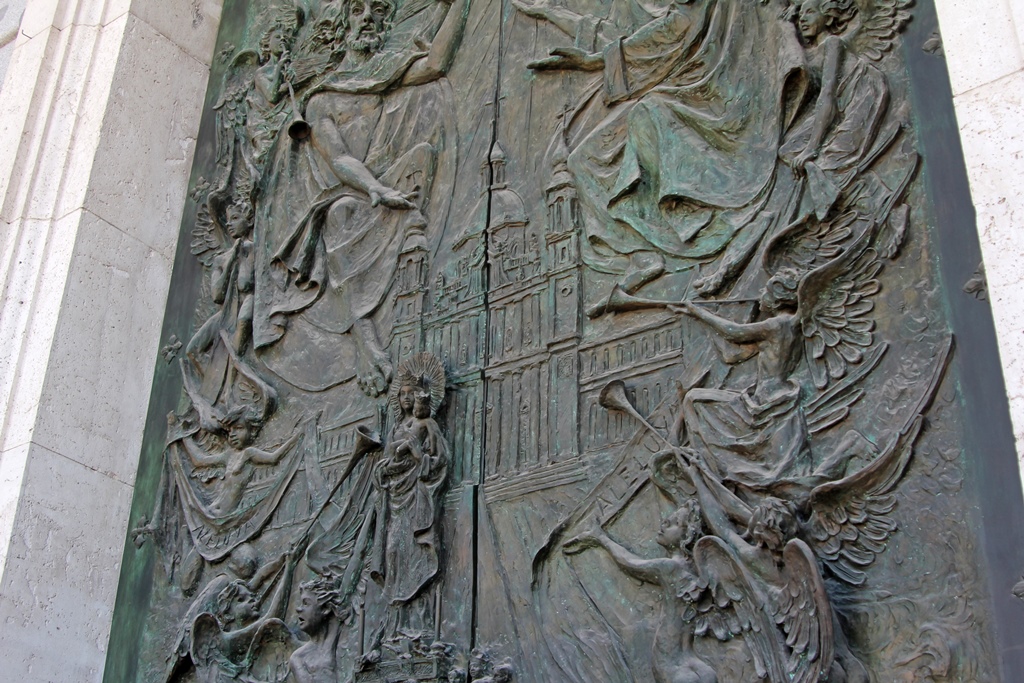
Cathedral/Virgin/Child Door
As far as layout and basic features, the Almudena Cathedral has everything one would
expect to find in a traditional cathedral. But it's very much a 20th-21st Century church.
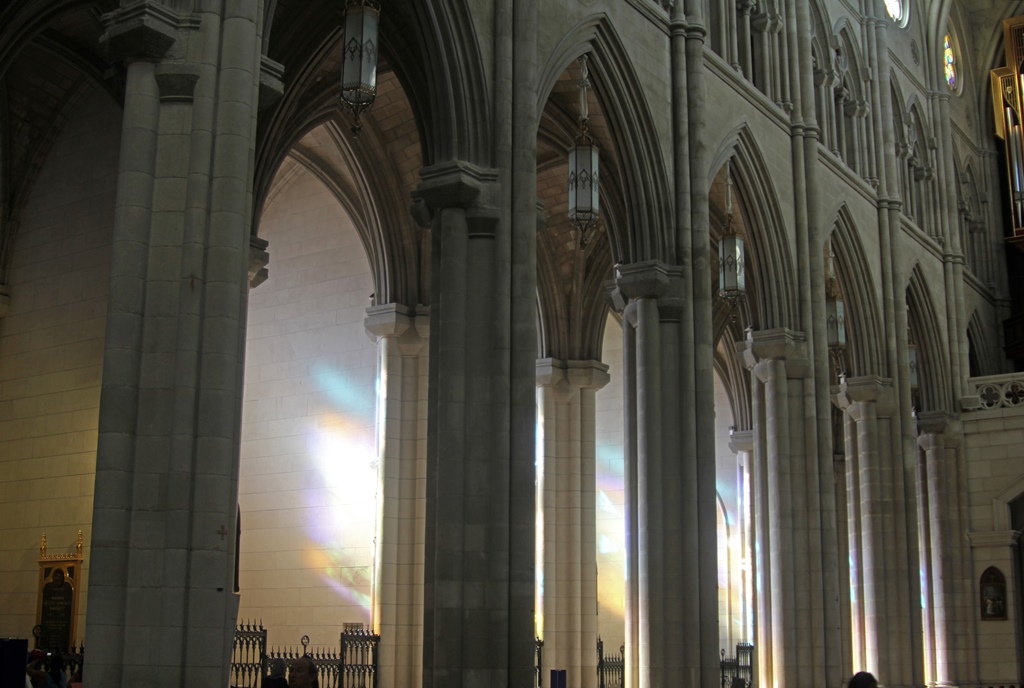
Chapels
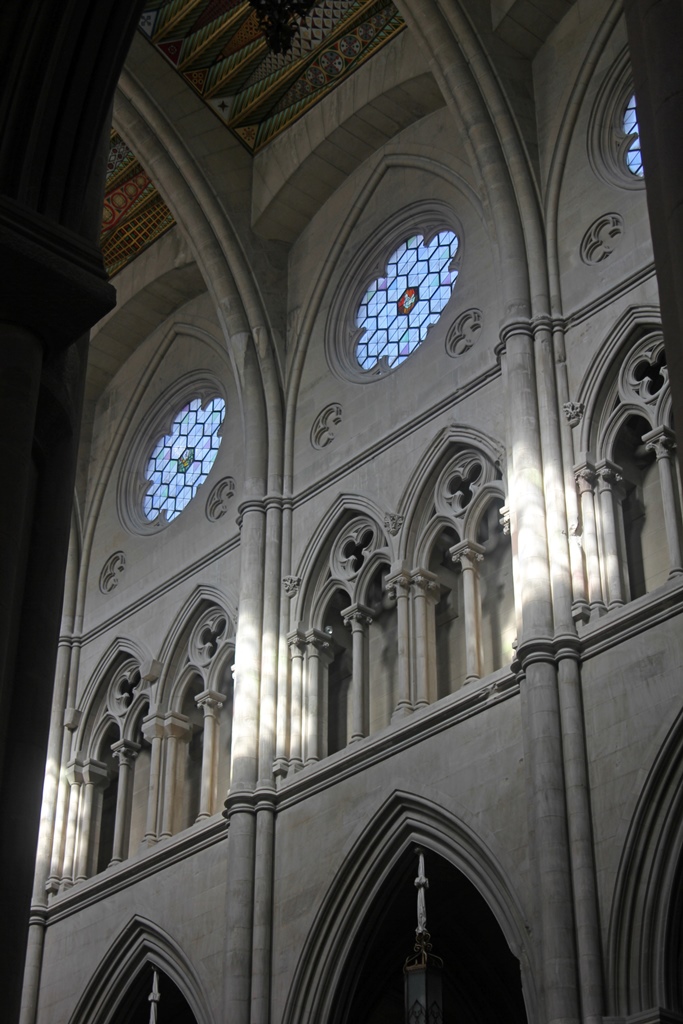
Windows and Gallery
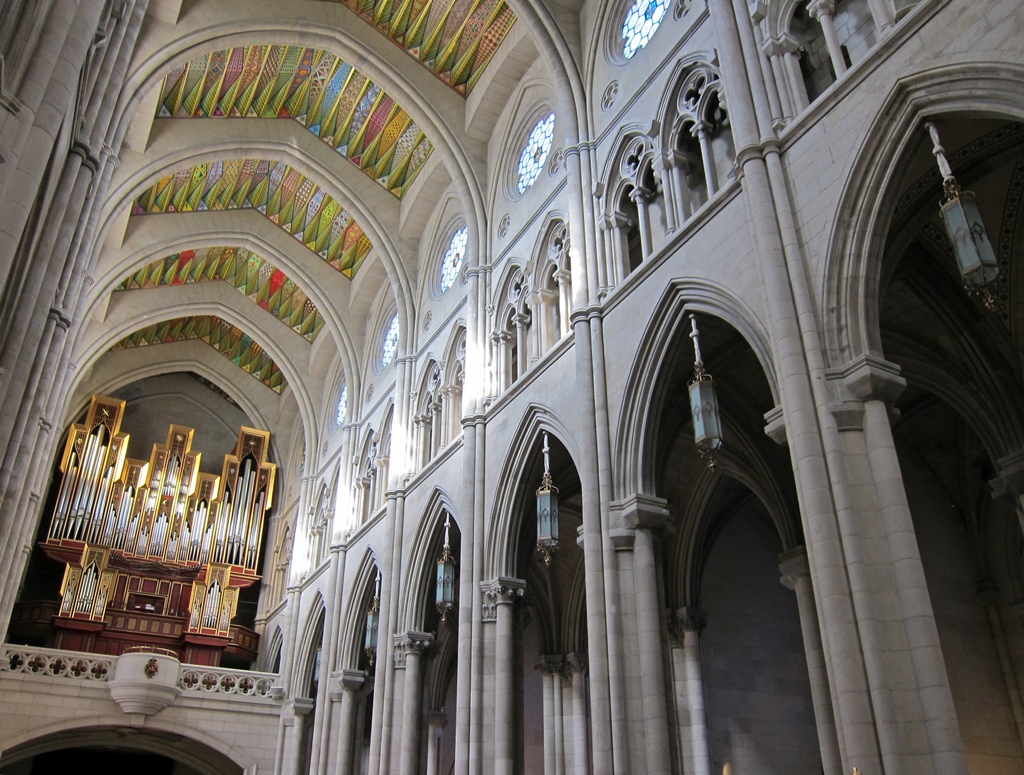
Nave and Organ
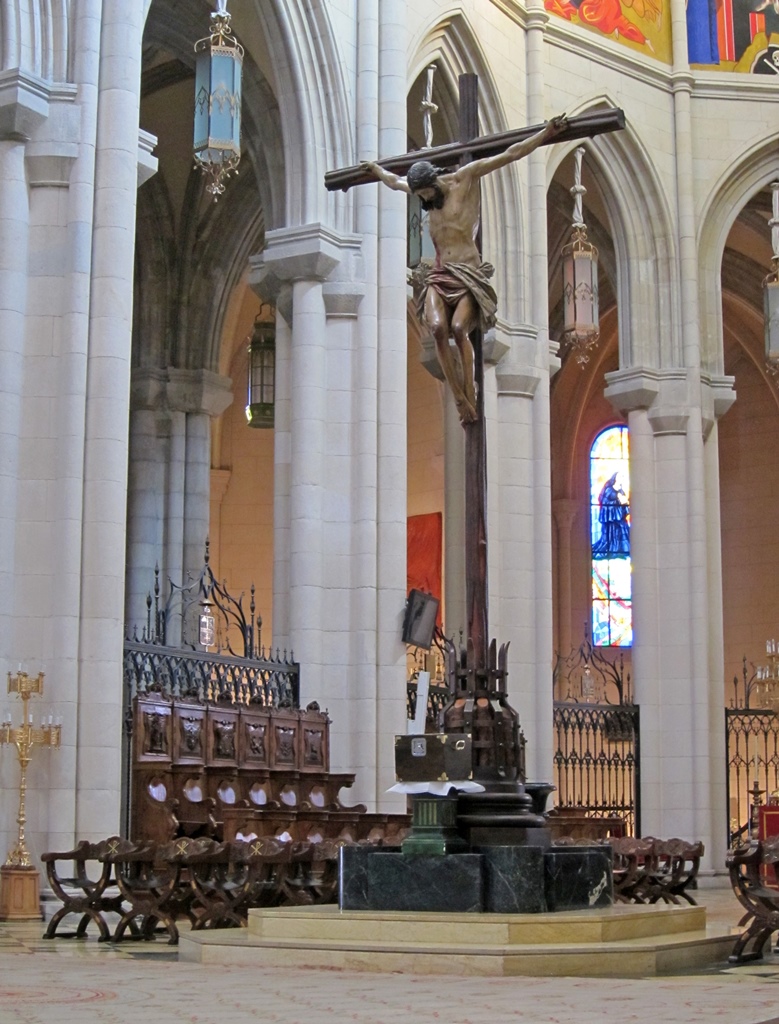
Main Altar
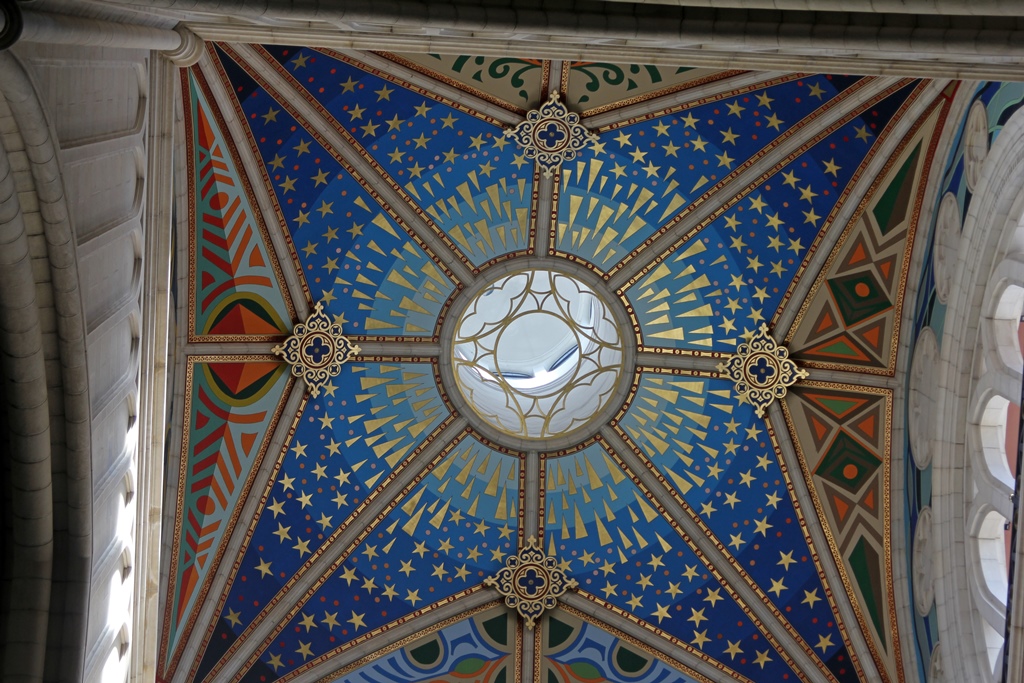
Inside the Dome
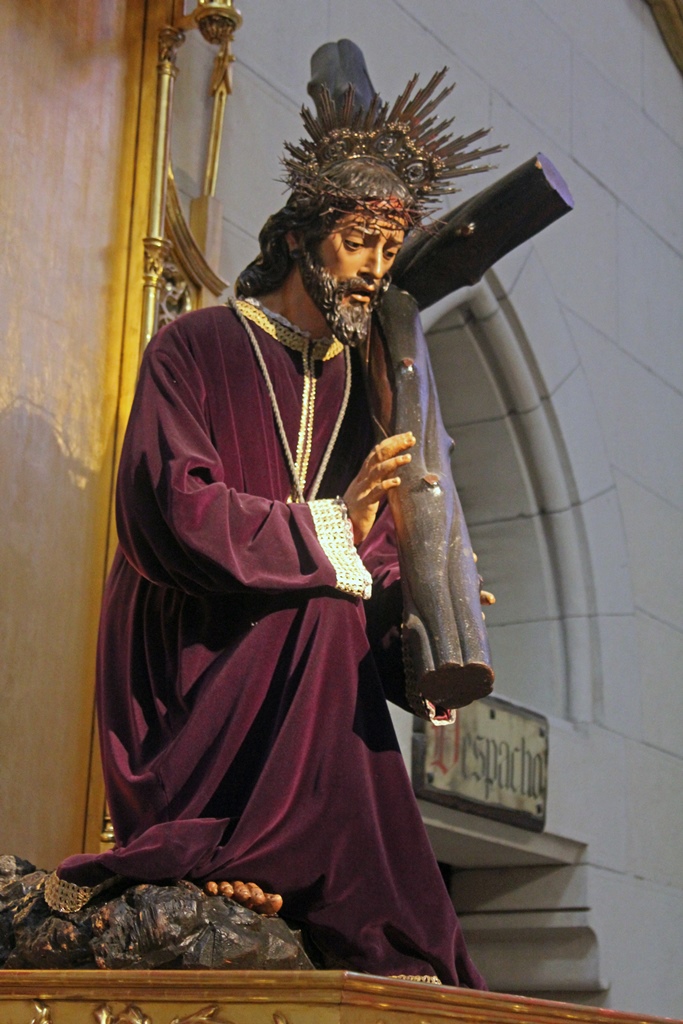
Jesus with Cross and Crown
One of the few exceptions to the recentness of the artwork can be found at the epistle
end of the transept (for landlubbers, "epistle end" means the right, or starboard end
of the transept as viewed from the base of the church; the end to port is known as the
"gospel" end), where the Altar of Santa Maria la Real de la Almudena is situated. The
altarpiece and Virgin figure are 15th Century. Below the altar is the tomb of Maria
de la Mercedes, Queen Consort of Alfonso XII, who died in 1878 at the age of 18 from
tuberculosis after helping to secure the property for the cathedral.
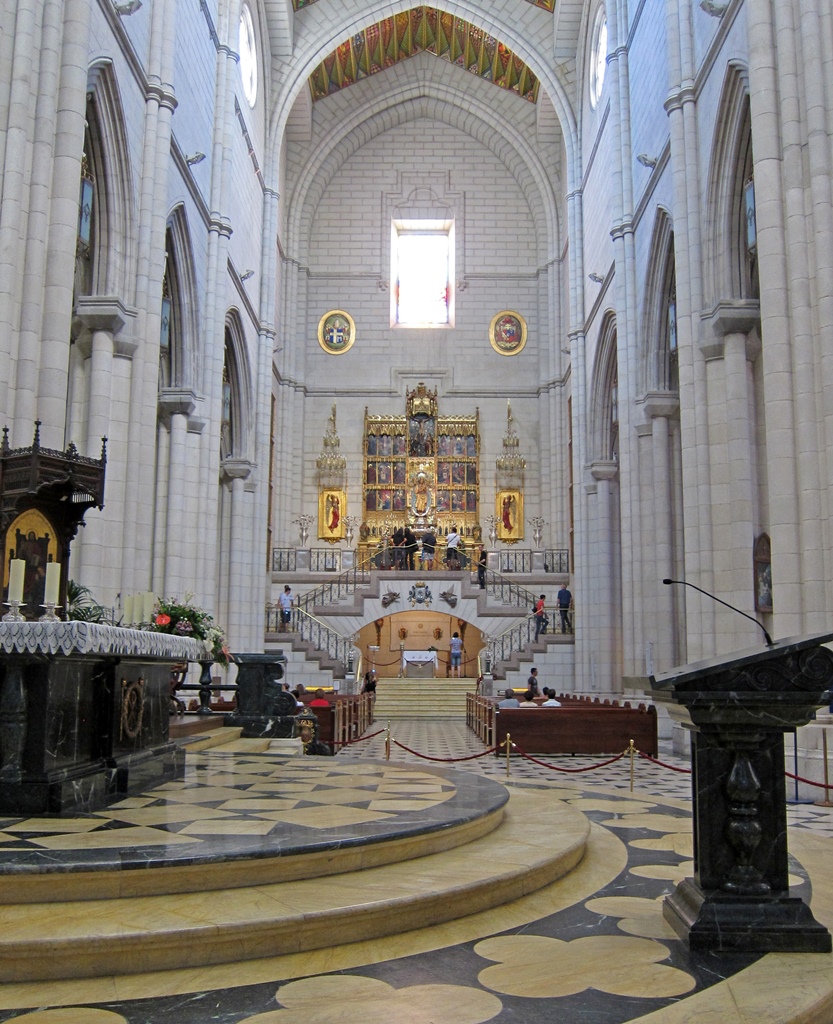
Transept Epistle from Transept Gospel
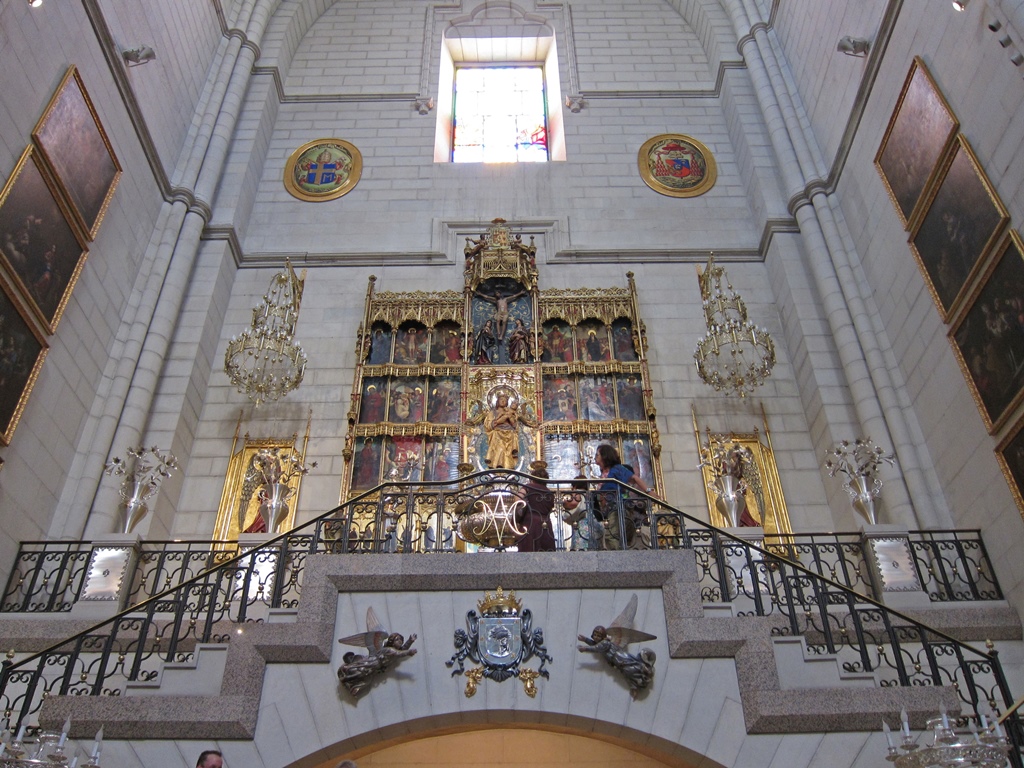
Altar of Santa Maria la Real de la Almudena
Metal Bouquet
It doesn't take very long to see what there is to see at the Almudena Cathedral,
and we exited the place, having accomplished this to our satisfaction. Across from
the cathedral to the north is Spain's Royal Palace, or Palacio Real, and we walked
over for a closer look at it. We didn't go in, as it was late and we were getting
hungry. Again, the Palacio Real has been covered in
a page from our 2010 trip,
and you should go there to learn more about it.
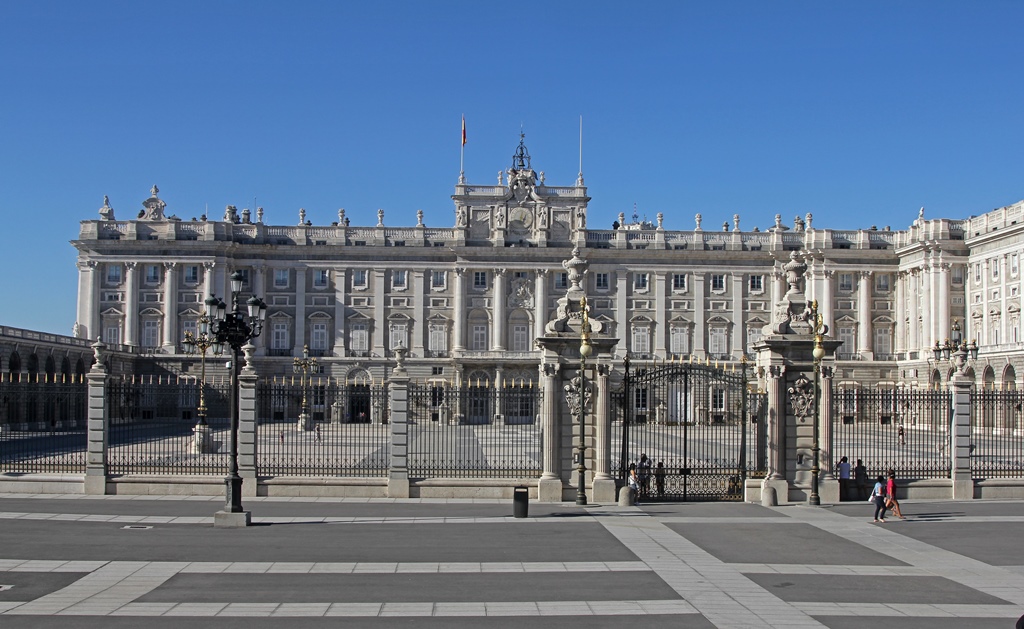
Palacio Real from Cathedral
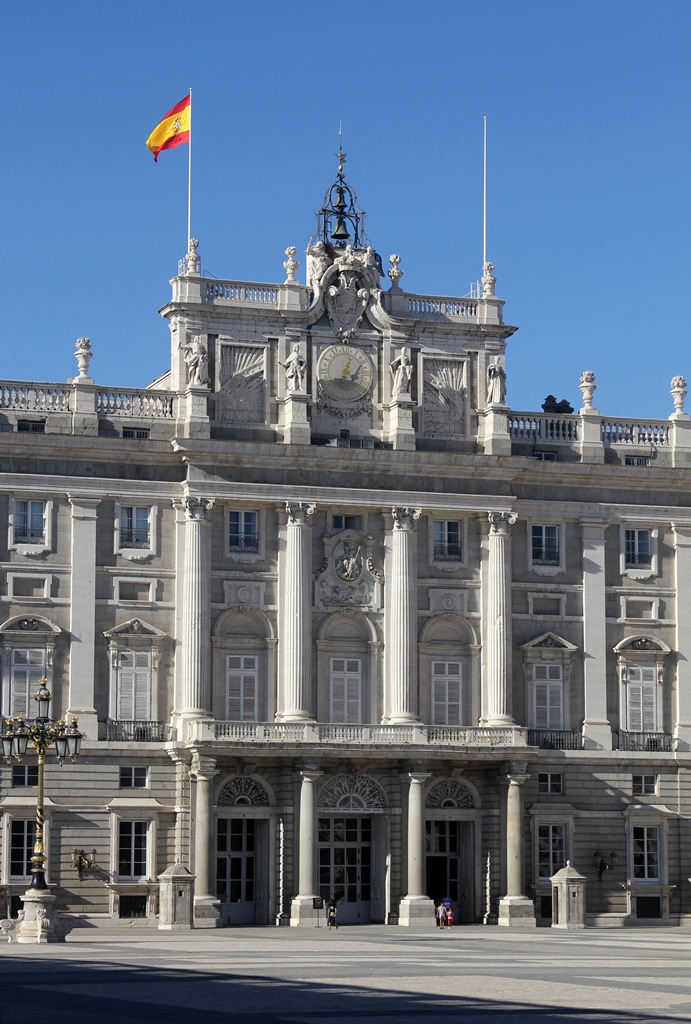
Palacio Real
We walked around to the north side of the palace to take a quick look at the Sabatini
Gardens. The gardens are named after Francesco Sabatini, an Italian architect who
designed the royal stables that had occupied the space before it was turned into a
garden in the 1930's. The gardens remained attached to the palace, meaning the public
was not allowed to visit them until after the death of Francisco Franco. Juan Carlos I
opened them to the public in 1978. We decided not to go into the gardens, for the same
reasons that we didn't visit the palace. Apparently there are many interesting plants
(duh), as well as pools and several statues (mostly moved here from the palace, which
had become overpopulated with them).
Jardines de Sabatini
We did pass through the Plaza de Oriente, east of the palace. It also has a lot of
statues, some of which you can see on the
Palacio Real page.
Here's the back side of the equestrian statue of Philip IV. You're welcome.
Monument to Philip IV, Fountain
On the way back to the hotel, we stopped for dinner at a Thai restaurant, where we
also picked up some won ton soup for Nella.
Bangkok Thai Restaurant, Calle del Arenal
On returning to the hotel, we found that Nella was still not feeling well and was not
enjoying herself. There was little we could do besides extend sympathy and won ton
soup. Hopefully it helped a little.





